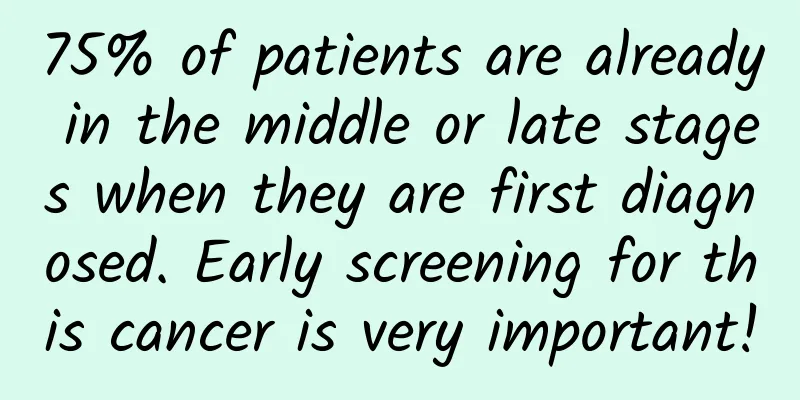75% of patients are already in the middle or late stages when they are first diagnosed. Early screening for this cancer is very important!

|
Lung cancer, the world's leading cancer killer, is threatening our health. Understanding it, knowing ourselves and the enemy, is the first step to defeating it. Ji Minghua, deputy chief physician of the Department of Radiotherapy at Jiangsu Cancer Hospital (Affiliated Cancer Hospital of Nanjing Medical University), will show us the common symptoms, diagnosis, treatment and prevention strategies of lung cancer. Ji Minghua said that common symptoms of lung cancer include persistent cough, blood in sputum, chest tightness, chest pain and shortness of breath. After excluding factors such as infection, if these symptoms appear and progressively worsen, one should be highly alert to the possibility of lung cancer. "In the diagnosis process, low-dose spiral CT of the chest is the most critical imaging method. It plays a vital role in the diagnosis, staging, efficacy evaluation and post-treatment follow-up of lung cancer." Ji Minghua introduced that molecular diagnosis, as an important supplement to imaging and cytological screening strategies, can guide precision treatment and select specific targeted treatments according to different genotypes of lung cancer. Pathological examination is the gold standard for diagnosing lung cancer, with a diagnosis rate of up to 99%. Regarding the question of whether lung puncture biopsy can cause tumor metastasis, which is a question that patients have many concerns about, Ji Minghua said that it is an invasive but safe diagnostic method. Its function is to help us detect and diagnose cancer cells. It generally does not cause metastasis. There is no need to worry too much, and we should actively cooperate with the specialist's examination. Data show that about 75% of patients are already in the middle or late stages of the disease when they first visit the doctor, having missed the best time for treatment, which makes early screening for lung cancer particularly critical. Ji Minghua reminded that lung cancer screening is recommended for high-risk people aged 50 to 74, former smokers or those who have quit smoking for less than 15 years, and those with a family history or history of chronic lung disease. Among the screening methods, low-dose spiral CT of the chest is the most important means, which can more effectively detect early lung cancer than traditional chest X-rays. When lung nodules are found during screening, not all nodules require treatment. Most lung nodules are benign, and whether they need treatment should be determined based on factors such as the size, density, and dynamic changes of the nodules during follow-up. Ji Minghua said that in the treatment of lung cancer, there is no "best" solution, but an individualized and precise treatment plan should be developed based on the patient's specific situation. "For patients with early and mid-stage lung cancer, especially those with small tumors and no local or distant metastasis, surgical treatment is the first choice." Ji Minghua said that for patients with specific gene mutations, the corresponding targeted treatment plan can be selected based on the results of genetic testing. Ji Minghua introduced that the multidisciplinary integrated diagnosis and treatment model integrates the opinions of experts from different medical fields to provide patients with the most optimized personalized integrated diagnosis and treatment plan, so as to maximize the treatment effect. Although some lung cancers have a familial clustering phenomenon, genetic factors are not the main cause of lung cancer. Lung cancer is the result of the combined effects of environmental carcinogens and human genetic factors. The vast majority of lung cancers are caused by or related to environmental carcinogens. "The high incidence of lung cancer in women is closely related to exposure to secondhand smoke and kitchen fumes." Ji Minghua said that secondhand smoke contains a large number of harmful substances and carcinogens. Non-smokers exposed to secondhand smoke have a risk of lung cancer that is about 1.5 times higher than those without secondhand smoke exposure. In addition, kitchen fumes produced by cooking methods such as frying are also one of the important causes of lung cancer in non-smoking women in China. Ji Minghua emphasized that quitting smoking is the primary measure to prevent lung cancer. The more smokers smoke, the longer they smoke, and the younger they start smoking, the higher their risk of lung cancer. Quitting smoking can significantly reduce the risk of lung cancer in smokers, and the longer they quit smoking, the greater the risk reduction. Wan Qiuyan, Tao Tao |
>>: Proba-3 mission: opening a new era of space-based “artificial solar eclipse” observations
Recommend
Is lotus root starch a healthy food? How did lotus root starch become a bowl of paste?
Lotus root powder is crystal clear, delicate, fra...
The fan conversion rate reaches 40%, promotion tips for wedding photography during the peak season!
Just one week after the Chinese Valentine's D...
How can a startup team quickly acquire seed users and detonate a user nuclear reactor?
After the product is launched, someone is needed ...
Community operation, how to improve activity and conversion rate?
In this article, the author will talk about how t...
Is intermittent fasting, which has been repeatedly "deified", a "code for renewal" or a "health trap"?
Produced by: Science Popularization China Author:...
WeChat Mini Programs have more than 450 million daily active users! Young people love e-commerce shopping the most
News on January 6, today, the 2022 WeChat Open Cl...
Is a food blender a nutrient absorption booster or just a waste of money?
In recent years, food wall breakers have graduall...
Self-help guide for "live streaming sales"
Today, I will share three aspects: First, what do...
From 0 to 1, a complete analysis of the key points of APP from launch to promotion
As a newbie in the operation circle, I still don’...
How to plan a new media marketing promotion plan?
What role does new media marketing play? How to s...
World Autism Day: Caring for “Children from the Stars”
They live among us But I have a heart that can on...
100 sets of training school enrollment scripts
Brief introduction of 100 sets of resources for t...
ColorOS 11 based on Android 11 officially announced: released on September 24
Following the launch of Android 11 Beta1 version ...
There may not be an "immortal bird" in the sky, but there are "immortal jellyfish" in the sea.
The Turritopsis dohrnii is tiny, usually about 4-...
Beware! This animal appears frequently after the rain, and many people have encountered it! Don’t touch it...
recent Heavy rain in Shenzhen One after another A...



![Haagen-Dazs: The magic weapon of store inspection [WeChat corporate account case]](/upload/images/67ebf29041d4f.webp)





